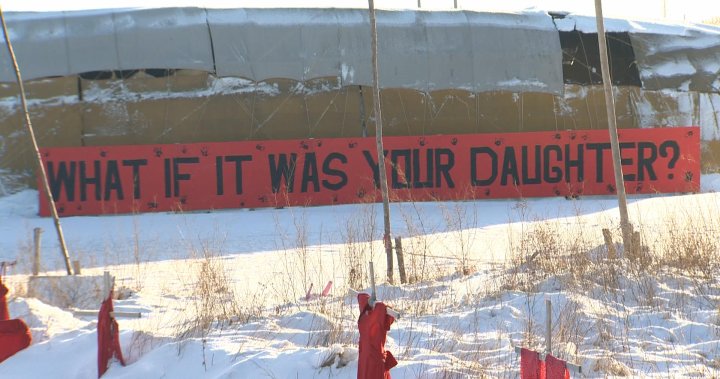Camp Morgan, a poignant symbol of resilience and the ongoing struggle for justice for Missing and Murdered Indigenous Women (MMIW), stands just outside Winnipeg’s Perimeter Highway. Established in December 2022, the camp became a sanctuary for the family of Morgan Harris, an Indigenous woman tragically murdered by a serial killer, and a focal point for community support and advocacy. The camp’s centerpiece, a sacred fire, burned continuously for two years, representing a spiritual connection to the creator and a beacon of hope for Harris’s return. This fire served as a powerful reminder of the unfinished quest to bring her and other MMIW home.
The story of Camp Morgan is inextricably linked to the horrific reality of violence against Indigenous women and the systemic failures that have compounded the grief of families like Harris’s. Morgan Harris, along with another victim, Marcedes Myran, are believed to be buried within the Prairie Green Landfill. Initially, law enforcement resisted searching the landfill, citing logistical challenges and safety concerns. This decision sparked outrage and fueled the determination of Harris’s family and Indigenous advocates to demand action. Years of tireless advocacy finally led to a search of the landfill, which is now in its fourth stage.
While the search at Prairie Green Landfill continues, the sacred fire at Camp Morgan has been extinguished. This decision marks a transition in the family’s approach, shifting their focus and energy towards the ongoing search efforts. The extinguishing of the fire is not an abandonment of hope but a strategic reallocation of resources. The family plans to relight the fire with ashes from the original flame when Harris’s remains are recovered, allowing her spirit to transition peacefully.
The closure of the sacred fire also signifies a broader strategy in the fight for justice for MMIW. While the physical fire is extinguished, the structures at Camp Morgan will remain, serving as a tangible reminder of the ongoing struggle. Once Harris is laid to rest, the family plans to relocate their efforts to the Brady Road Landfill, where the remains of another Indigenous woman, Tanya Nepinak, are believed to be located. This planned relocation exemplifies the persistent and evolving nature of the advocacy for MMIW, demonstrating the commitment to seeking justice for all missing and murdered Indigenous women.
The case of Morgan Harris, and the establishment of Camp Morgan, highlight the systemic issues contributing to the disproportionate violence against Indigenous women in Canada. The initial reluctance to search the landfill reflects a historical pattern of indifference and inadequate response to the crisis of MMIW. The persistence of Harris’s family and Indigenous advocates in demanding a search underscores the resilience and determination within these communities to fight for justice and hold authorities accountable.
The ongoing search of the Prairie Green Landfill, and the future efforts planned for Brady Road Landfill, represent a vital step towards closure and healing for the families of the victims. However, the larger fight for justice requires addressing the root causes of violence against Indigenous women. This includes implementing the recommendations of the National Inquiry into Missing and Murdered Indigenous Women and Girls, promoting reconciliation, and fostering greater understanding and respect for Indigenous cultures and communities. Camp Morgan, though its sacred fire is now extinguished, remains a potent symbol of this ongoing struggle, a testament to the enduring strength of families seeking justice, and a call for meaningful change to protect future generations of Indigenous women.

